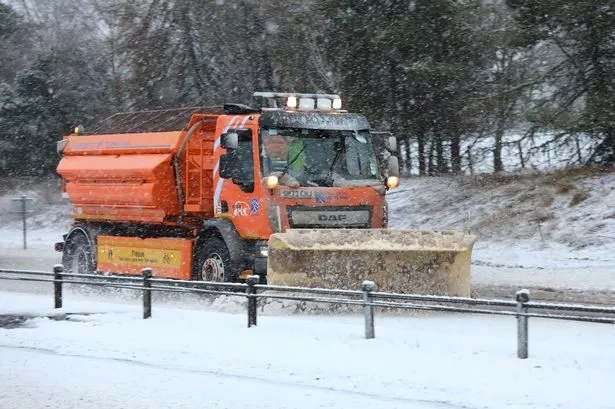The United Kingdom is bracing for a significant shift in weather patterns as meteorological forecasts predict a period of unsettled conditions marked by widespread snow and rain, commencing on January 29th and continuing through January 30th. New weather maps illustrate the projected trajectory and intensity of this incoming weather system, revealing a substantial band of precipitation sweeping across the country. While specific localized impacts remain subject to ongoing forecast refinements, the general consensus points towards a widespread disruption due to a combination of wintry precipitation and heavy rainfall. This anticipated weather event holds the potential to disrupt travel, impact daily routines, and pose challenges to infrastructure, particularly in areas prone to flooding or heavy snowfall accumulation.
The development of this weather system is attributed to a complex interplay of atmospheric factors, including the movement of low-pressure systems, fluctuating jet stream patterns, and temperature gradients across the region. The interaction of these elements creates an environment conducive to the formation of precipitation, with the specific form – snow or rain – largely dependent on localized temperature profiles. Areas experiencing colder temperatures are more likely to see snowfall, while milder regions will likely experience predominantly rainfall. The predicted intensity of the precipitation also varies across the UK, with some areas projected to receive significantly higher accumulations than others. This uneven distribution highlights the importance of localized weather forecasts for accurate preparedness and response.
The impending weather event raises concerns about potential disruptions to various sectors, including transportation, infrastructure, and daily life. Heavy snowfall can lead to road closures, flight cancellations, and delays in public transport services, significantly impacting commutes and travel plans. The combination of snow and rain can also create hazardous driving conditions due to reduced visibility and slippery surfaces. Furthermore, the accumulation of snow and ice can pose structural challenges to buildings and infrastructure, particularly if accompanied by strong winds. Power outages are also a possibility due to downed power lines caused by the weight of snow or ice.
In anticipation of the potential disruptions, authorities and relevant agencies are likely to issue advisories and implement preparedness measures. These may include preemptive road closures in high-risk areas, deployment of snow removal equipment, and activation of emergency response teams. Public service announcements will likely be disseminated through various channels to inform residents about the developing weather situation and provide guidance on necessary precautions. Individuals are encouraged to monitor weather forecasts closely, adjust travel plans as needed, and prepare for potential power outages or disruptions to essential services.
Beyond the immediate impacts of the snow and rain event, there are also potential secondary consequences to consider. Heavy rainfall can lead to flooding in low-lying areas or regions with poor drainage systems, posing risks to property and public safety. The rapid melting of snow following the event can exacerbate flooding concerns. Additionally, the combination of freezing temperatures and subsequent thawing can damage roads and infrastructure, leading to potholes and other structural issues. The agricultural sector may also experience impacts depending on the timing and severity of the weather event, with potential damage to crops or disruption to planting schedules.
In conclusion, the forecast of a significant snow and rain event across the UK from January 29th to 30th underscores the importance of preparedness and proactive measures to mitigate potential disruptions. While the precise localized impacts remain subject to ongoing forecast refinements, the general consensus points towards a widespread weather event with the potential to disrupt travel, impact daily routines, and pose challenges to infrastructure. Individuals, businesses, and authorities are encouraged to monitor weather forecasts closely, implement necessary precautions, and prepare for potential disruptions to essential services. The combined impact of snow, rain, and freezing temperatures requires a multi-faceted approach to preparedness, encompassing transportation safety, infrastructure resilience, and public awareness campaigns to ensure the safety and well-being of communities across the affected regions.














